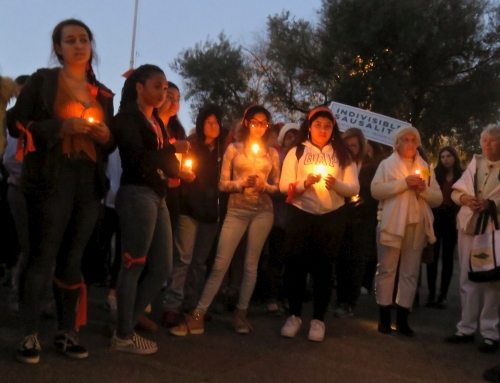DID JESUS HAVE LONG HAIR? A DISCUSSION
I sometimes get asked questions that demand a little bit of explanation because of the complex interactions of history, culture and the Bible. I call these “Manna” questions, as when the people of Israel wandering into the wilderness asked on the first day that God rained bread from the skies. They picked it up and decided to name it “Manna” which simply means, “What is it?”
Art and the Depiction of Jesus
So let’s consider this manna question: What is the length of Jesus hair? Artists have rendered His hair as being long and with a beard for as far back as the third century. The difficulty with this depiction is that there is really no description of Jesus with any length of hair or beard that we can see in the Bible. Further, during the days of the early church (the first and second century) the leaders of the church forbade any pictorial depiction of Jesus, fearing that the church might descend into worship of these images. This is of course of legitimate concern, seeing that the life, death and resurrection of Jesus was fresh in the mind of the church of the day, and that there were those who might take a picture of Jesus and make it their idol. It wasn’t until the days of the persecution of Christians that we see frescos of Jesus depicted in the catacombs as believers identified their suffering with the suffering of their Lord. These frescos in the third and fourth century depict a Jesus with long hair and beard. So the upshot of this is that we really don’t know, but there is opportunity to venture a “best guess”.
Nazirite vs Nazarene
There are various confusions that we should address before we land at a conclusion, however. The first is the assumption that Jesus must have had long hair because He was called a Nazarene, pointing to Numbers 6 as the basis of an individual who makes a vow before God to keep himself holy, one of which was never to cut one’s hair. We know that Samson was committed to the Nazirite vow which accounts for Samson’s long hair. To clear things up a little, the word that is used in Numbers 6 is “Nazirite”. Jesus was called a Nazarene because His family ended up in a town in Galilee called Nazareth. They are different terms. Further, we know that Jesus ate and drank with sinners and touched those who were ill and raised the dead. These things would never be part of a Nazirite’s activities. So Jesus was not a Nazirite. The Apostle Paul, on the other hand, was described as having cut his hair in Acts 18:18 because “he was under a vow”. This is likely the Nazirite vow that Paul was under, and he shaved his head at Cenchreae at the completion of the Nazirite vow. I will return to my observation of Paul’s hair cutting shortly.
Jewish Culture and Practice
There is Biblical reference, however, that the practice of hair-cutting was not a common one among the people of Israel in the Old Testament. 2 Samuel 14:26 describes Absalom as having such a mane of hair that he would cut it once a year only because it became very heavy. Jeremiah (in Jeremiah 9:26; 25:23; 49:32) made special reference to the surrounding nations who “cut the corners of their hair” to distinguish these nations from the Jewish nation who presumably did not cut the corners of their hair. It should be noted that Jeremiah wasn’t making a statement of values, but a description of differences. At no point did Jeremiah make a statement about the length of hair and the closeness to God.
Culture and Values
This is not to say that the length of hair does not have cultural values attached to it. Men from among Hasidic Jews are forbidden to keep their hair long so that they do not look like a woman. The sideburns and beards may be long because Hasidic men are not allowed to cut their hair in specific facial regions, but they are not allowed to grow their hair long. Hasidic women in fact wear wigs so that their natural hair is covered. These values are taught to Hasidic men and women as obedience to God. Outside the Jewish realm, Sikh men also practice Kesh, the honoring of God by not cutting one’s hair. It is combed and bundled up so that it sits in a bun on the head or in a turban. These practices again are of cultural origins that have a value statement attached. The Amish and the Rastafarians are examples of cultures and religions that make statements on hair cutting. In ancient Rome, men’s haircutting became an elaborate affair. The hair was cut short and curled all around, and such became symbols of class and honour. Men with unkempt hair were considered uncouth and shameful.
This brings us back to Paul. In 1 Corinthians 11:14, Paul declares that “nature” teaches us that if a man has long hair, it is a shame to himself. The question that one needs to consider is what this “nature” is. In a Jewish culture where hair cutting was not a huge focus, and where it was, not cutting one’s hair was a symbol of a vow of purity before God, Paul’s reference to long hair being a shame seems quite out of place. That brings us back to the culture that Paul finds himself in, and the people he’s addressing. The Corinthian church is largely a Gentile church with Jews having joined that congregation as a result of persecution by the Romans. Paul was addressing what was “natural” from a Roman perspective – that men cut their hair as a symbol of self-respect, and women cover their heads as a symbol of giving God the glory. It is important to note that such practices are not meant to be prescriptive for the church. Legalists generally have a heyday with declarations like this. In fact, Paul concludes his discussion on the length of men’s hair and the covering that women should wear with these words, “If anyone is inclined to be contentious, we have no such practice, nor do the churches of God.” (1 Corinthians 11:16) In other words, if there are people who want to argue the point, Paul is not setting a “practice” as a requirement, and he is saying that the churches in the rest of the world at that time, stretching from Jerusalem to Antioch, Colosse to Thesilonika, do not have such a practice dictated to them either. Don’t make it such a big deal!
Jesus and Long Hair
I will note that Jesus never made the length of one’s hair a big deal. It is your heart, your life, your holiness before God, and your surrender before Him that is a big deal for Jesus. So back to the question we started off with: Did Jesus have long hair? I am inclined to think that He did. And a beard too. That is because having a regular haircut wasn’t a practice that people did at that time. But remember, it is not a statement of what God desires of you. Live as Jesus called you to live. And let your hair style be of secondary concern.






